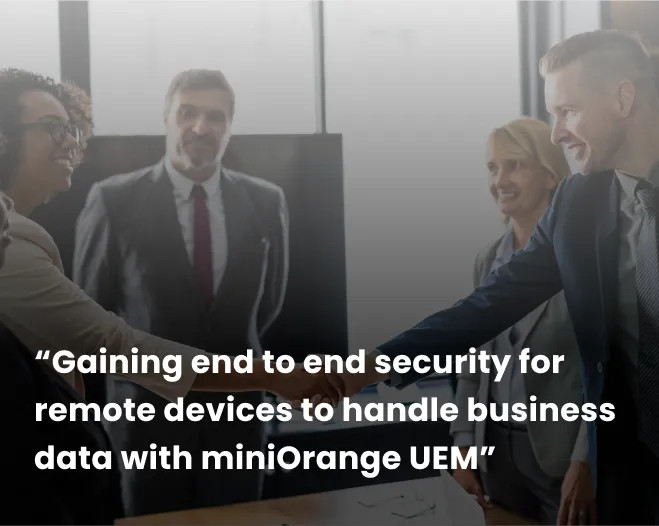Need Help? We are right here!
Search Results:
×Enterprise Mobility Management (EMM) uses different tools to keep devices safe and secure within an organization. It helps set up devices, like deciding what apps can be used and who can access them. It supports bulk user and device enrollment and applies policies to them at once. EMM also helps if a device gets lost or stolen by letting the company wipe off the data remotely. Overall, it's like a big helper that takes care of all the company's mobile devices to make sure everything runs smoothly and stays safe.

It is a powerful tool of EMM that protects corporate data and sensitive business information stored on employee work devices. It enables IT to implement strong security protocols such as device locking and data wiping in case of device loss or employee departure.
When a device is enrolled in MDM, it automatically installs App Store apps and custom enterprise apps. This ensures a seamless and non-disruptive user experience.
It regulates app downloads, controls access to corporate networks, and manages data transfer. Once installed on an employee’s work device, this EMM feature helps remotely update apps, receive push support, and manage licensing. It further prevents unauthorized app installations for added security.
Using the concept of least access privilege, MCM grants employees access to only essential content and resources that are crucial for their roles. This enables precise access control and data authorization for individual users and ensures optimal security measures.
The Mobile Identity Management (MIM) feature aims to secure enterprise data by allowing access solely to trusted devices and verified users. It focuses on authentication methods like certificates, code signatures, and single sign-on, ensuring that only authorized users and trusted devices gain access to resources.
Mobile Expense Management (MEM) monitors mobile communication costs, offering valuable insights into device usage, service utilization, and policies like BYOD reimbursements. This data serves as a strategic tool that assists organizations in shaping effective mobile device policies.
Protects data on devices, whether corporate or personal, using security measures like multi-factor authentication. It gives IT administrators the ability to selectively erase data without impacting employees’ data.
Monitor and manage applications installed on company devices. Enterprise mobility management services involve distributing, updating, and securing applications across various devices. This feature ensures that employees get access to approved apps while maintaining security standards.
Control and validate user access to company resources. It manages user identities, permissions, and authentication methods to ensure that only authorized individuals can access specified data or apps.
Secure the data stored or accessed on work devices. EMM uses encryption, data loss prevention measures, and policies to safeguard sensitive information, preventing unauthorized access or data leakages.
Manage and control the transfer of content or documents within an organization. EMM includes secure file sharing, collaboration tools, and data synchronization to ensure employees can access necessary documents securely.
Expense management involves monitoring and controlling costs related to mobile devices and services. It includes tracking usage, managing mobile contracts, optimizing data plans, and controlling expenses associated with company-provided devices or employee reimbursements.
Enterprise Mobility Management solutions involve a set of tools and features like Mobile Device Management (MDM), Mobile Content Management (MCM), Mobile Application Management (MAM), and security measures to control and safeguard mobile usage within the enterprise.
EMM offers various advantages, such as improved security by enforcing policies on devices and applications, secure access to corporate resources remotely, reducing IT administrative workload, and ensuring compliance with industry regulations.
EMM solutions can manage a wide range of devices, such as laptops, smartphones, tablets, and IoT (Internet of Things) devices used within an organization.
EMM uses multiple security measures such as authentication, encryption, remote lock and wipe functionalities, and secure containerization of personal and corporate data.
Yes, miniOrange EMM solutions are designed to integrate seamlessly with existing enterprise systems, applications, and cloud services.
Thank you for your response. We will get back to you soon.
Please enter your enterprise email-id.
